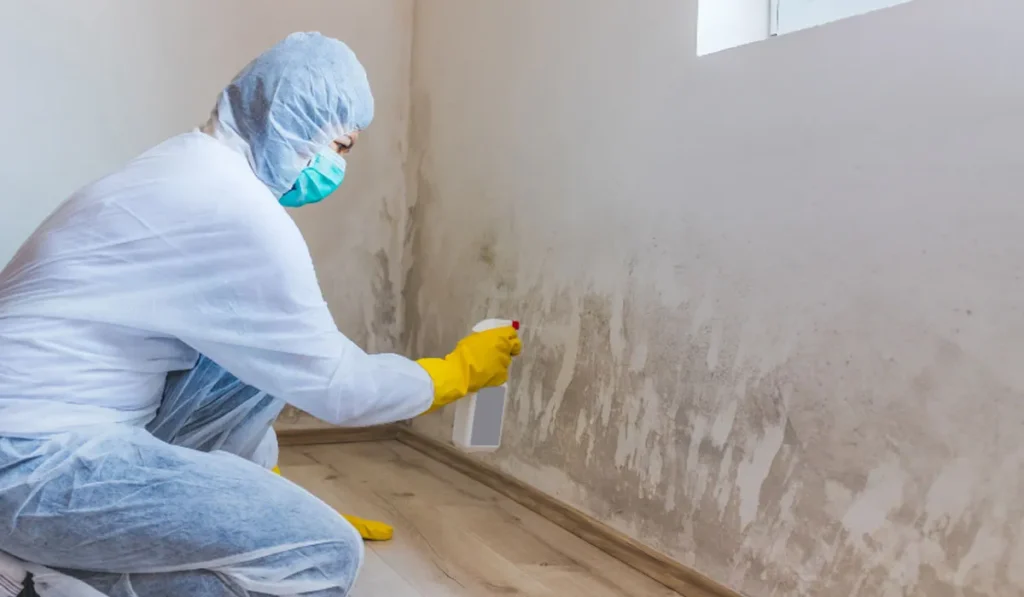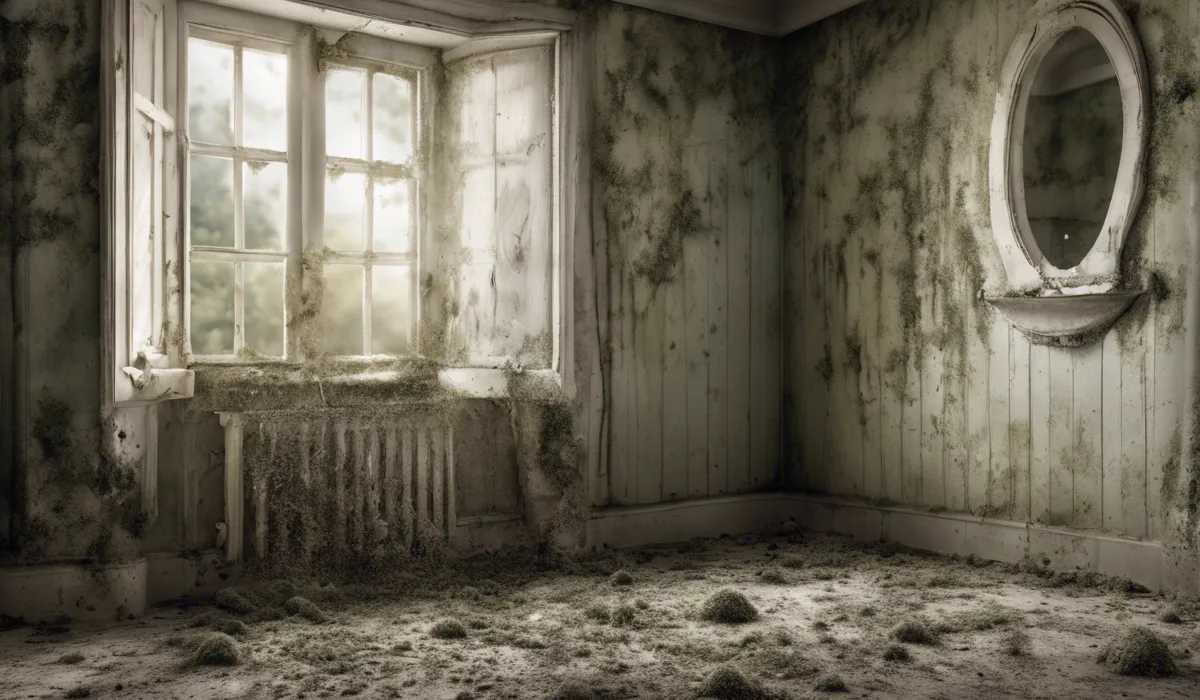A musty smell often indicates the presence of mold or mildew, as these fungi produce odorous compounds when growing in damp environments. While a musty odor suggests a high likelihood of mold, it is not conclusive; professional inspection can confirm its presence.
Understanding the Musty Smell

Definition and Characteristics of a Musty Smell
A musty smell is often described as earthy, damp, and stale. It’s the kind of odor that you might notice in an old book or a closed-up room that hasn’t been aired out for a while.
The smell comes from the presence of organic compounds that are released into the air as mold and mildew grow. These odors are particularly strong in areas with poor ventilation or excess humidity.
Common Sources of Musty Smells in Homes and Buildings
Musty smells in homes and buildings often come from basements, attics, crawl spaces, and bathrooms where moisture can accumulate.
Other sources include old fabrics, carpets, wallpaper, and wood that have absorbed moisture over time.
Leaks in roofs or pipes can also contribute to the problem, as can condensation around windows and HVAC systems.
Psychological and Physical Reactions to Musty Smells
Musty smells can lead to discomfort or a sense of unease. Some people may experience headaches, nausea, or dizziness in strong musty environments.
Long-term exposure to musty smells, which can indicate mold presence, may also result in respiratory issues or allergic reactions in sensitive individuals.
Difference Between Musty Smells and Other Common Household Odors
Musty smells differ from other household odors like cooking smells or pet odors. They are not the result of daily activities but indicate a potential issue with moisture and mold.
Musty smells linger and do not dissipate easily, unlike many other household odors that can be cleared with ventilation.
Link Between Musty Smells and Mold

Explanation of What Mold Is and How It Grows
Mold is a type of fungus that can grow both indoors and outdoors. It reproduces by releasing spores that float through the air and settle on surfaces.
When mold spores land on a damp spot, they can start to grow and spread, which is when they begin to produce the musty odors we associate with mold.
Conditions That Promote Mold Growth and Musty Smells
Mold thrives in moist, warm, and dimly lit conditions. High humidity levels, poor ventilation, and organic materials like wood, paper, or fabric provide the perfect environment for mold to grow. Once it starts, it can continue to produce musty smells until it is removed.
Types of Mold Associated with Musty Odors
While there are thousands of types of mold, certain kinds like Penicillium, Aspergillus, and Stachybotrys (commonly known as black mold) are often connected with musty smells. These molds can appear in various colors, including black, white, green, or yellow.
Health Implications of Mold Exposure
Exposure to mold can cause a variety of health issues, especially for people with allergies, asthma, or weakened immune systems.
Symptoms may include respiratory problems, coughing, sneezing, eye irritation, and skin rashes. In severe cases, mold exposure can lead to more serious conditions like mold-induced asthma.
Indicators That a Musty Smell May Be Due to Mold
If a musty smell persists despite regular cleaning, it may be a sign of mold. Visible signs of mold growth, water stains on walls or ceilings, and persistent health symptoms when in a particular area are also indicators that mold could be the source of the musty smell.
Addressing Musty Smells and Potential Mold Issues

Initial Steps to Take When You Notice a Musty Smell
When you notice a musty smell, start by ventilating the area. Open windows and use fans to circulate fresh air.
Inspect common problem areas for signs of mold or moisture. If the smell does not improve with ventilation, it may be time to look for potential mold sources.
How to Identify the Presence of Mold in Your Environment?
Look for visible mold growth, which might appear as discolored patches or spots. Pay attention to areas with known water issues, such as leaks or flooding. Musty smells in combination with these signs can confirm the presence of mold.
Professional Mold Assessment and Remediation
If you suspect a serious mold issue, a professional mold assessment is essential. Certified mold inspectors can conduct thorough inspections and tests to determine the extent of the problem.
Remediation experts can then safely remove the mold and address the source of moisture to prevent its return.
DIY Solutions for Minor Mold and Musty Smell Problems
For minor mold issues, DIY solutions like vinegar or baking soda can be effective. Scrubbing the affected areas with these natural cleaners can help kill the mold and neutralize odors. However, for larger infestations, professional help is recommended.
Preventative Measures to Keep Mold and Musty Smells at Bay
Maintaining low humidity levels, ensuring proper ventilation, fixing leaks promptly, and using dehumidifiers can help prevent mold growth.
Regular cleaning and inspections of prone areas can also reduce the likelihood of mold developing and the associated musty smells.
FAQs About Musty Smell and Mold
Does a musty smell always mean there is mold in my home?
A musty smell often suggests the presence of mold, but it is not a definitive indicator. A professional inspection is needed for confirmation.
What causes a musty smell in my house?
A musty smell in your house is typically caused by mold or mildew growing in damp environments, which release odorous compounds.
Can a musty smell indicate issues other than mold?
Yes, a musty smell can also be caused by factors such as humidity, lack of ventilation, or other decaying organic material, not just mold.
How can I confirm if the musty smell in my house is due to mold?
To confirm if mold is causing a musty smell, you should have a professional mold inspection and possibly testing conducted in your home.
What should I do if I detect a musty smell but see no visible signs of mold?
If you detect a musty smell but no visible mold, you should still consult a professional as mold can grow in hidden areas, such as behind walls or under floors.
Final Thoughts
A musty odor is a strong indicator of potential mold or mildew presence, as these fungi emit distinctive smells in moist areas.
However, the scent alone cannot definitively confirm mold; a thorough professional examination is required for accurate identification and subsequent remediation if necessary.
